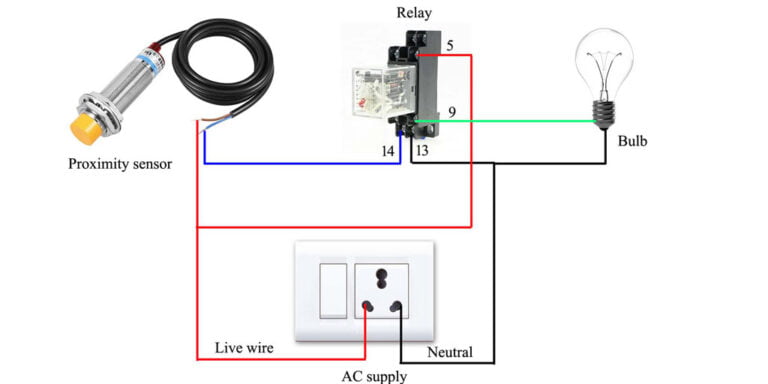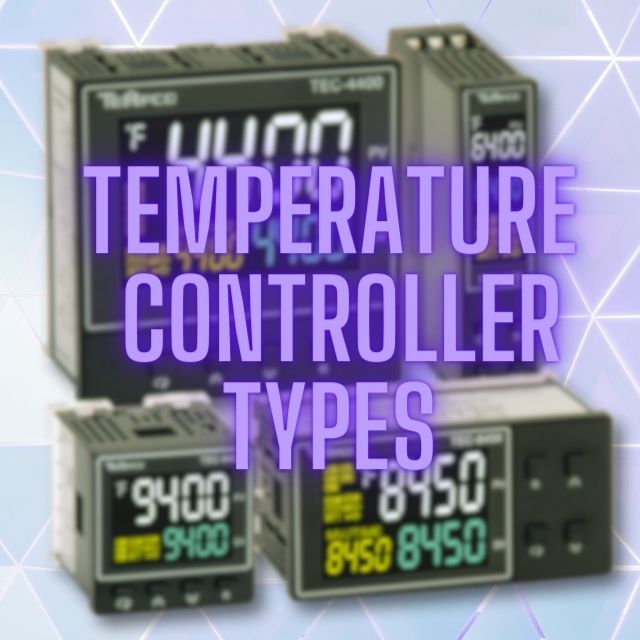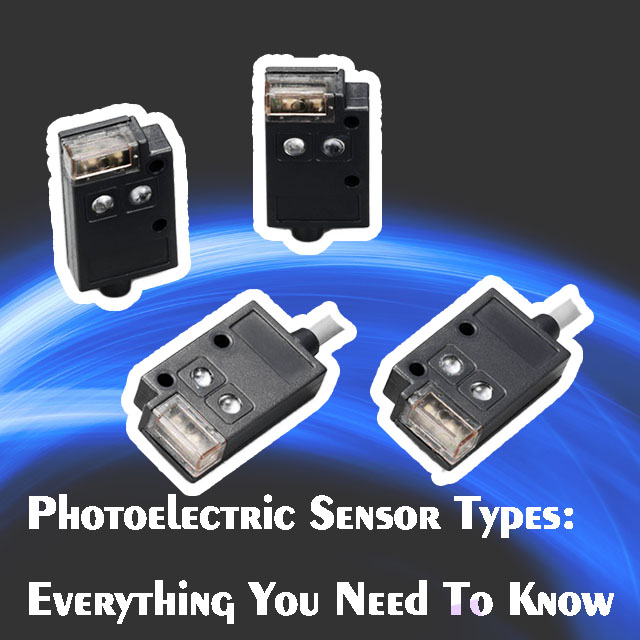لمحة عامة
استقرائي مستشعرات القرب هي أدوات لا غنى عنها في مختلف الصناعات، مثل الأتمتة والسيارات والتصنيع، نظرًا لقدرتها على اكتشاف وجود الأجسام المعدنية دون تلامس مادي. من بين الأنواع المختلفة من هذه المستشعرات، تحظى مستشعرات القرب الاستقرائي ثنائية الأسلاك بشعبية خاصة لبساطتها وسهولة تركيبها. تتعمق هذه المقالة في طريقة عمل مستشعرات القرب الاستقرائي الاستقرائي ثنائي الأسلاك ومزاياها وتطبيقاتها.
ما هو مستشعر القرب الحثي ثنائي الأسلاك؟
أجهزة استشعار القرب الاستقرائي ثنائية الأسلاك هي أجهزة غير تلامسية تُستخدم للكشف عن وجود أو عدم وجود أجسام معدنية على مقربة. وهي تعمل على مبدأ الحث الكهرومغناطيسي، حيث يتسبب التغير في المجال المغناطيسي في توليد تيار مستحث في جسم معدني قريب. تتألف أجهزة الاستشعار من مذبذب وملف كشف ودوائر معالجة الإشارات، وكلها موضوعة داخل حاوية مدمجة ومتينة.
على عكس الأنواع الأخرى من أجهزة الاستشعار الاستقرائية، والتي قد تتطلب ثلاثة أسلاك أو أكثر لنقل الطاقة والإشارة، تقلل أجهزة الاستشعار ثنائية الأسلاك من تعقيد إعداد الأسلاك من خلال استخدام سلكين فقط لكل من إمدادات الطاقة وإخراج الإشارة. هذا التبسيط يجعلها أكثر فعالية من حيث التكلفة وأسهل في التركيب، خاصةً في التطبيقات ذات المساحة المحدودة أو حيثما كان من الضروري تشغيل الكابلات الطويلة.

2 سلك دائرة استشعار القرب الاستقرائي الحثي، المصدر من: https://www.academia.edu/43611433/Inductive_Proximity_Switches
كيف يعمل مستشعر القرب الحثي ثنائي الأسلاك؟

يتألف مستشعر القرب الاستقرائي من 4 أجزاء، وهي ملف الكشف ودائرة التذبذب ودائرة استشعار حالة التذبذب ودائرة الخرج، وبالتالي، فإن المستشعر الذي يعمل على 4 برايودات سيمر بأربعة مراحل، انظر المراحل الأربعة أدناه:
- المذبذب: يقوم المذبذب بتوليد مجال مغناطيسي متناوب عن طريق تمرير تيار متناوب عبر ملف الكشف. ويمتد هذا المجال المغناطيسي إلى ما وراء وجه المستشعر إلى البيئة المحيطة.
- الكشف: عندما يدخل جسم معدني إلى نطاق الكشف الخاص بالمستشعر، يحث المجال المغناطيسي التيارات الدوامة في الجسم. تولد هذه التيارات الدوامة مجالاً مغناطيسيًا ثانويًا معاكسًا للمجال المغناطيسي الأصلي الذي ينتجه المستشعر.
- معالجة الإشارات: ينتج عن التفاعل بين المجالين المغناطيسيين تغير في سعة المذبذب أو تردده. تكتشف دارة معالجة الإشارة في المستشعر هذا التغير وتنتج إشارة خرج، عادة في شكل تغير في الجهد أو التيار.
- المخرجات: تنتقل إشارة الخرج عبر نفس السلكين اللذين يزودان الطاقة إلى جهاز الاستشعار، مما يجعله نظاماً ثنائي الأسلاك. يمكن معالجة إشارة الخرج بواسطة أجهزة خارجية، مثل وحدات التحكم المنطقية القابلة للبرمجة (PLCs)، لاتخاذ قرارات تستند إلى وجود أو عدم وجود الجسم المكتشف.
مزايا مستشعر القرب الاستقرائي ثنائي الأسلاك

- الأسلاك المبسطة: مع الحاجة إلى سلكين فقط لكل من الطاقة ونقل الإشارة، تقلل المستشعرات ثنائية الأسلاك من تعقيد التركيب والتكلفة.
- تصميم مدمج: نظرًا لانخفاض متطلبات الأسلاك، يمكن تصميم أجهزة الاستشعار ثنائية الأسلاك لتكون أصغر حجمًا وأكثر إحكاما من نظيراتها ثلاثية الأسلاك، مما يجعلها مثالية للتطبيقات ذات المساحة المحدودة.
- موثوقية عالية: إن الطبيعة غير التلامسية لمستشعرات القرب الاستقرائي تقضي على البلى الميكانيكي، مما يؤدي إلى زيادة طول العمر والموثوقية.
- مجموعة واسعة من التطبيقات: يمكن استخدام مستشعرات القرب الاستقرائي ثنائي الأسلاك في مختلف الصناعات والتطبيقات، مثل خطوط التجميع وأنظمة النقل وتصنيع السيارات.
تطبيقات مستشعر القرب الاستقرائي ثنائي الأسلاك الحثي
- اكتشاف الموقع: في الأتمتة الصناعية، تُستخدم أجهزة الاستشعار ثنائية الأسلاك بشكل شائع للكشف عن موضع مكونات الماكينة، مما يضمن سير العمليات بسلاسة وكفاءة.
- عد الكائنات: يمكن تركيب أجهزة استشعار على طول أنظمة النقل لحساب عدد العناصر التي تمر عبرها، مما يوفر بيانات قيمة لمراقبة الإنتاج وإدارة المخزون.
- تطبيقات السلامة: يمكن استخدام مستشعرات القرب الاستقرائي ثنائي الأسلاك كأجهزة أمان للكشف عن دخول جسم معدني، مثل شخص يرتدي شارة أمان معدنية، إلى منطقة خطرة.
- مراقبة الجودة: في التصنيع، يمكن لأجهزة الاستشعار ثنائية الأسلاك أن تساعد في تحديد المكونات المفقودة أو الموضوعة في غير مكانها في المنتج، مما يضمن وصول العناصر عالية الجودة فقط إلى العميل النهائي.
الخاتمة
في الختام، توفر مستشعرات القرب الحثي ثنائية الأسلاك حلاً بسيطًا وموثوقًا وفعالاً من حيث التكلفة للكشف عن وجود الأجسام المعدنية في مختلف التطبيقات الصناعية. إن سهولة تركيبها وقدرتها على العمل في البيئات القاسية تجعلها خيارًا شائعًا للمهندسين والمصممين الذين يتطلعون إلى تحسين كفاءة وسلامة أنظمتهم.






